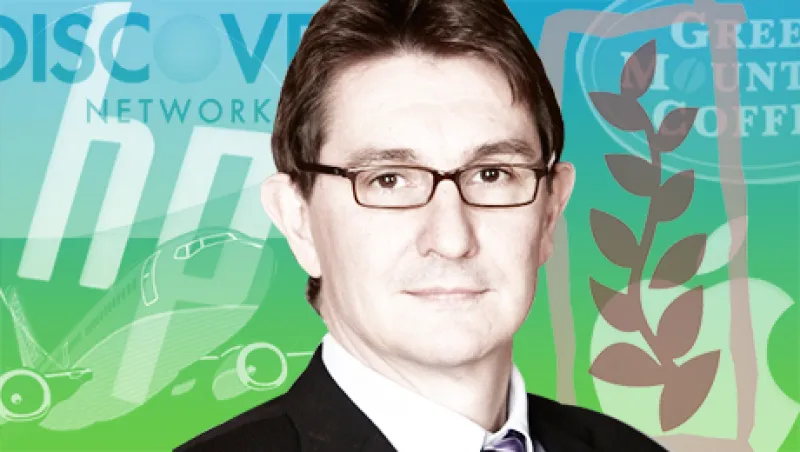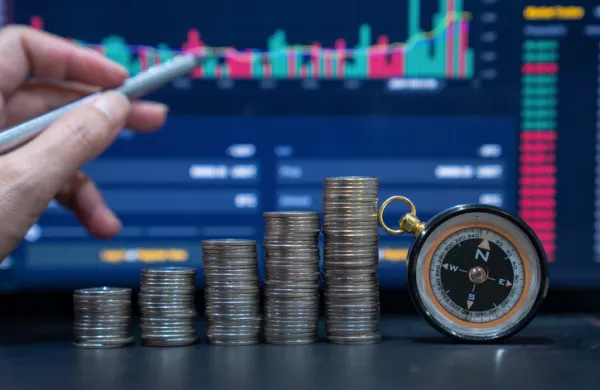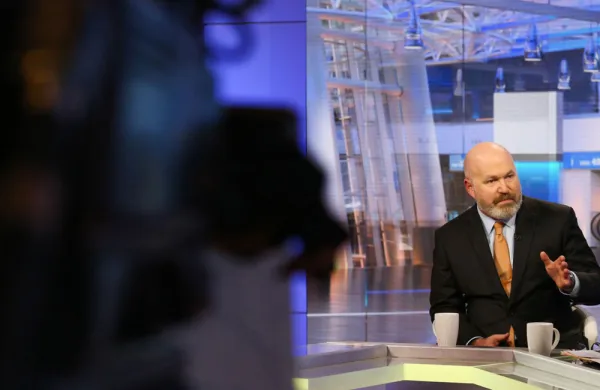Not long ago, investors reflexively praised announcements of major corporate share repurchases. But skepticism over buybacks has grown recently, as Monsanto Co. discovered in June when it announced a $10 billion stock repurchase plan, the largest by any company this year. The St. Louis–based agribusiness confidently earmarked more than 13 times its capital expenditures in fiscal 2013 to buy back stock, hoping to double earnings per share.
Most share buybacks rarely generate much comment beyond approval. But in Monsanto’s recent conference call, the buyback plan triggered a flood of questions. Analysts Kevin McCarthy at Bank of America Merrill Lynch, Mark Gulley at BGC Financial and Joel Jackson at BMO Capital Markets urged Monsanto chief financial officer Pierre Courduroux to discuss the company’s motivation and expectations. How would the buyback affect alternative uses of capital? How much growth would come from repurchases and how much from net income? How did Monsanto settle on its target leverage?
This barrage of questions fetched mostly routine answers. “When we voted on the buyback, we assessed potential for growth and potential for cash generation,” Courduroux said. “So we feel we will be able to fund the business and growth going forward.” He left questions about credit ratings to Standard & Poor’s, which downgraded Monsanto three notches a few days later, to BBB+, near the lower cusp of investment grade. S&P also reduced the company’s risk profile assessment to intermediate from minimal.
No one asked Courduroux to defend the $10 billion buyback as a sound investment of shareholders’ capital. But Monsanto’s track record on buyback return on investment has been decidedly subpar and lags the medians of both the 274 companies in Institutional Investor’s Corporate Buyback Scorecard and its peers in the materials sector. Monsanto can’t say that two years isn’t enough time for buybacks to produce satisfactory returns. The company ranked at 103 in the second quarter of 2013, when it only beat the medians by narrow margins. Since then buyback returns have gone south.
| Buyback Scorecard CFOs Share Their Stock Buyback SecretsThe S&P 500 as Stock RepurchasersBest and Worst ProgramsIndustry Comparisons |
Without benchmarks companies can freely spend on stock repurchases with little accountability. The scorecard reports on stock repurchase performance at companies in the S&P 500 that bought back shares worth more than 4 percent of their market capital over the eight quarters through June.
The scorecard reveals a wide range of results. The Technology Hardware and Equipment sector posted collective buyback ROI of nearly 34 percent, for first place, followed by Media companies, which delivered 30.4 percent. These two sectors also retired the most market capital: 9.1 percent and 8.6 percent, respectively. By contrast, Telecommunications Services delivered just 5.7 percent in buyback ROI, retiring 5.9 percent of capital in the process.
Notwithstanding multibillion-dollar buybacks this year at Monsanto, Discover Financial Services, Gilead Sciences, Twenty-first Century Fox and a handful of other companies, quarterly data reveals a definite slowdown in the pace of buybacks. During the second quarter 29 buybacks committed some $40 billion, well short of 42 announcements worth $93 billion in the first quarter and 55 totaling $133 billion in 2013’s fourth quarter. A year ago 68 companies promised nearly $90 billion in buybacks. By 2013 standards, Monsanto’s $10 billion program would have warranted only seventh place, behind programs at Apple, IBM Corp., Merck & Co., 3M Co., Wal-Mart Stores and ?Yahoo.
Many attribute a slowdown in buybacks to a rise in M&A, which surpassed $2 trillion in the past year, the highest level since pre-financial-crisis 2007. However, the use of cash to buy back shares is a complex issue in a hot M&A market. Some companies may want to conserve cash and borrowing power for potential M&A deals. But cash may also attract takeover bids.
Stock markets near their historical tops also affect the pace of buybacks. “One of the dangers managers face is that they end up doing buybacks when stock prices look high,” says Douglas Skinner, a professor of accounting at the University of Chicago’s Booth School of Business.
Still, share price increases alone may not satisfy buyback appetites. Delphi Automotive, an auto-parts supplier once based in Michigan but now headquartered in the U.K., still has $700 million left in its latest buyback program, which will be funded from cash flow. Despite a robust share price gain of 25 percent that outpaced the S&P 500 by 4 percentage points from August, 22, 2013, to August 27, 2014, the company still intends to deploy those funds. “We believe our stock price is undervalued by any measure,” says Delphi CFO Kevin Clark, “and therefore it is not an issue.” Clark has recent history on his side. Delphi ranks No. 10 in current buyback ROI overall and leads the Automobiles and Components sector.
In consultation with Delphi’s investor relations and treasury departments, Clark says that he guides buyback strategy subject to board approval. Treasurer Brad Spiegel pulls the trigger on day-to-day execution. “We don’t turn any decisions over to outsiders,” Clark says. “We establish guidelines on a medium, long-term and daily basis with respect to appetite, dollar threshold and dollar amount.”
A second scorecard metric, buyback effectiveness, reveals a pronounced decline in the upside of well-timed executions. Tracked over six scorecards, buyback effectiveness relates buyback ROI to underlying shareholder returns. The scorecard represents those shareholder returns with a third metric, buyback strategy.
A repurchase program generates positive results when buyback ROI exceeds buyback strategy — that is, when the repurchase program creates value above the total return to shareholders. Companies generate positive buyback effectiveness by repurchasing stock at levels below rising price trends. Zero median buyback may mean that access to the kind of inside information managers have when making investment decisions provides no particular edge. Negative buyback effectiveness suggests that managers are doing worse than outside investors.
The current scorecard shows a market-timing bonus of almost zero. A year ago timing gave buyback ROI a shot of adrenaline, and median buyback effectiveness approached 20 percent.
Some companies defied the decline in buyback effectiveness. Since Apple announced buybacks last year, its buyback effectiveness of 34 percent has helped fuel its buyback ROI. The Cupertino, California, company has roared back, from next-to-last place in buyback ROI a year ago to No. 46. Palo Alto, California’s Hewlett-Packard Co. ranks second for buyback effectiveness and sixth overall in buyback ROI.
A year ago San Antonio, Texas–based Tesoro Corp.’s buyback ROI ranked near Apple’s — and it still lags 210 companies. Poor timing added to Tesoro’s problems. The company repurchased shares as its stock price fell, yielding the scorecard’s worst buyback effectiveness: –27.5 percent. All except 18 companies on the current scorecard achieved buyback ROI in positive territory, but some 138 companies reported negative buyback effectiveness.
At the other end of the ranking, a 117 percent buyback ROI easily put Keurig Green Mountain, a Waterbury, Vermont–based maker of coffee brewing systems, at the top of the list for the second consecutive scorecard. Keurig initiated a $500 million share repurchase program in July 2012 and reported buying 5.6 million shares in fiscal 2013 at an average price per share of $33.37. Initial results encouraged the board to authorize a second buyback for $1 billion, following a number of quarters in which repurchases hovered near or below the $100 million mark. Undeterred by a stock price that had rocketed above $100 a share, Keurig poured $700 million into buybacks in 2014’s first quarter, reporting that during the 39 weeks through the end of June it had paid an average price of $102.27 for 7.7 million shares.
Keurig’s continued run of robust buyback ROI now rests on the introduction of its latest, soon-to-be-released coffee brewer, dubbed Keurig 2.0. Analysts at BofA Merrill Lynch caution about rising material costs and hefty investment in product launches at the company. They recently lifted earnings estimates for fiscal 2014 and 2015 but retain a neutral outlook. If Keurig stumbles, the recent buyback program could weigh it down.
Dallas-based Southwest Airlines Co. returns to the top ten, landing at No. 2 by posting buyback ROI of 91.6 percent. Third-ranked Milpitas, California–based SanDisk Corp. generated 73.5 percent buyback ROI.
Many other companies lack the flexibility of fast growers like Keurig and Southwest. Navient Corp., formed from troubled student loan servicer Sallie Mae, dwells near the bottom of the scorecard, with dismal buyback ROI and buyback effectiveness scores. At Navient and elsewhere, says Janney Capital Markets analyst Sameer Gokhale, “management generally has been poor in terms of timing buybacks.” But Navient’s options are limited. “The other consideration is how much cash and capital a company is generating relative to places where it can deploy capital,” Gokhale says. If ?Wilmington, Delaware–based Navient can find no better place to invest, buybacks are more prudent than misguided investment in capital goods or M&A. “There is no way for management to win,” Gokhale notes. “There is always some constituency that feels disappointed.”
The rise in buyback programs after the financial crisis stirred academic interest in the phenomenon, particularly the question of whether managers make timely buyback decisions. Buybacks are a test of the market judgment of senior executives. Managers make few pivotal investment decisions with more facts at hand.
Using data from stock repurchases by 2,237 U.S. companies from 2004 through 2011, finance professors Amy Dittmar of the Stephen M. Ross School of Business at the University of Michigan and Laura Field of Pennsylvania State University’s Smeal College of Business tackled the question of timing. Their paper, “Can Managers Time the Market? Evidence Using Repurchase Pricing Data,” crunches the prices companies report each month on repurchased shares and average stock price data before and after repurchases.
The verdict: Market timing does add value. “The median firm repurchases stock at a price that is 1.8% lower than the average closing price six months before to six months after the repurchase,” the authors conclude.
They saw differences between companies that buy back stock frequently and those that repurchase only when they judge market conditions to be suitable. Frequent repurchasers generally have higher market-to-book ratios, less volatility and narrower bid-ask spreads. Frequent repurchasers also tend to retire more shares in a year.
Opportunistic companies display a decided edge. They repurchase shares, on average, at prices 6 to 8 percent below average monthly closing prices. The benefit persists, the authors say, for as long as three years from the repurchase date.
Evidence that market timing works sits uneasily with the fact that companies often miss buyback opportunities. “When you look, on average, purchases go significantly down in years when the market is plummeting and up in years when the market is doing well,” says finance professor John Graham of Duke University’s Fuqua School of Business. “It does not appear that companies are successfully timing repurchases of their stock in years when it is cheap or undervalued.”
Like other companies that embark on buybacks, Monsanto cannot guarantee results. But at least the company has left no doubt about its intentions. Instead of trumpeting a commitment to repurchase its shares with cash flow at some unspecified point, it has locked in accelerated buybacks. Over the next 12 months, Monsanto will repurchase shares in bulk worth $6 billion, half from JPMorgan Chase & Co. and half from Goldman Sachs Group. That’s confidence. We’ll have to wait to see if it produces the desired results. • •






